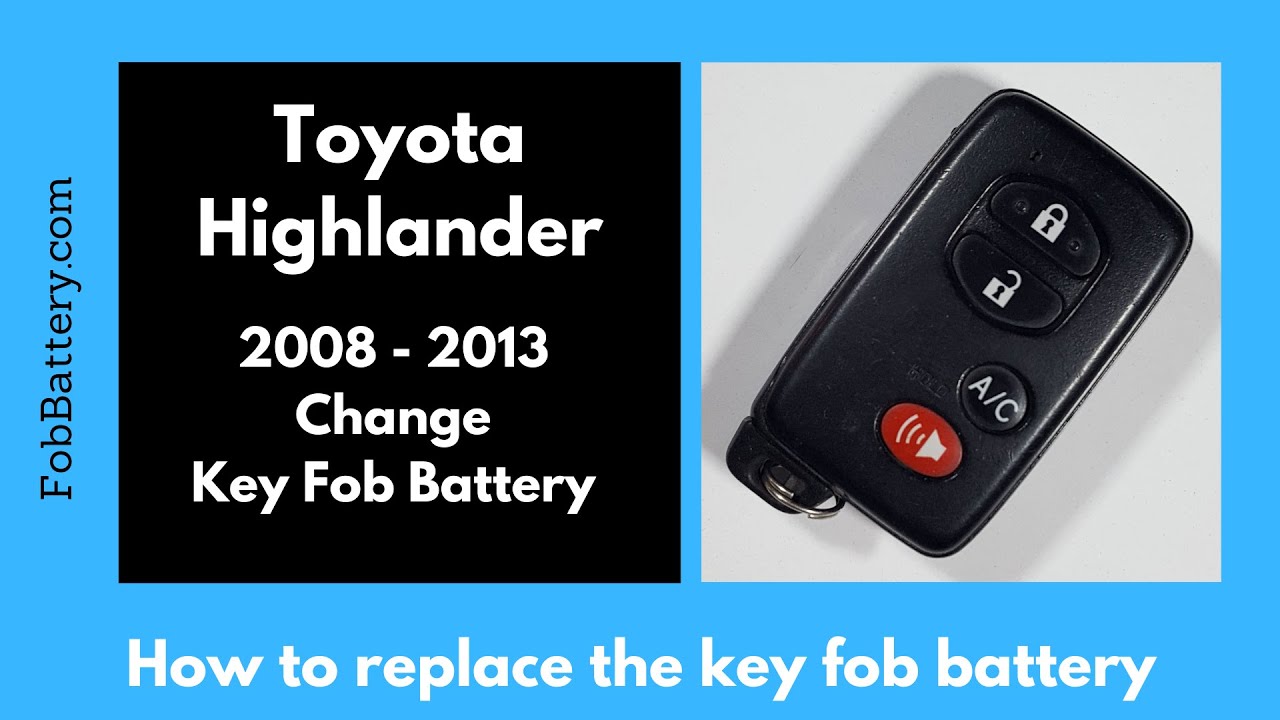Introduction
Replacing the battery in your Toyota Highlander key fob is a straightforward task. You don’t need any special skills or tools, just a CR1632 coin battery and a flathead screwdriver. Below, I will guide you through each step to replace the battery in your key fob.
- IN THE BOX: 4-pack of CR1632 3-volt lithium coin cell replacement batteries for small electronic devices
- DEVICE COMPATIBLE: Ideal for watches, calculators, games and more
- LONG LASTING: Long-lasting, reliable battery life; performs in extreme temperatures
Tools and Materials Needed
Before starting, gather the necessary tools and materials:
- Flathead screwdriver
- CR1632 coin battery
If you don’t have a CR1632 battery, you can easily purchase one online. I recommend ordering from Amazon for convenience.
Step-by-Step Battery Replacement
Remove the Internal Key
First, locate the small button on the side of the key fob that says “push.” Hold down this button and pull out the internal key. This will reveal a larger hole (the keyhole) and a smaller slot perpendicular to it.
Open the Key Fob
Insert your flathead screwdriver into the small slot. Hold the device loosely and twist the screwdriver. The key fob will start to open. Carefully pull the two halves apart and set them aside.
Remove the Old Battery
Under the circuit board, you’ll see the battery housed in its compartment. Use the corner of the flathead screwdriver to pry the battery out from the top corner. Apply gentle force to avoid damaging the circuit board. The battery should come out easily.
Insert the New Battery
Take your new CR1632 battery and position it with the positive side facing up. Place it into the battery compartment and press it until it clicks into place.
Reassemble the Key Fob
Align the two halves of the key fob and press them together until they click. Ensure the internal key is reinserted into its slot. Your key fob should now be fully functional with the new battery.
- IN THE BOX: 4-pack of CR1632 3-volt lithium coin cell replacement batteries for small electronic devices
- DEVICE COMPATIBLE: Ideal for watches, calculators, games and more
- LONG LASTING: Long-lasting, reliable battery life; performs in extreme temperatures
Conclusion
Replacing the battery in your Toyota Highlander key fob is a quick and easy process. With just a flathead screwdriver and a CR1632 battery, you can do it yourself at home. This guide has provided you with all the necessary steps to complete the task.
If you found this guide helpful, feel free to leave a comment. For more tutorials on changing key fob batteries for other car models, visit FobBattery.com or check out our YouTube channel.
Frequently Asked Questions (FAQ)
What type of battery does the Toyota Highlander key fob use?
The Toyota Highlander key fob uses a CR1632 coin battery.
Do I need any special tools to replace the battery?
No, you only need a flathead screwdriver to open the key fob and replace the battery.
How often should I replace the key fob battery?
It’s recommended to replace the key fob battery every 1-2 years or when you notice a decrease in its range.
Can I use a different type of battery?
No, it’s important to use the specified CR1632 coin battery to ensure proper functionality.
What should I do if my key fob still doesn’t work after replacing the battery?
If your key fob doesn’t work after replacing the battery, double-check that the battery is installed correctly with the positive side facing up. If it still doesn’t work, there may be an issue with the key fob itself that requires professional assistance.
Is it safe to replace the battery myself?
Yes, it is safe to replace the battery yourself by following the steps provided in this guide.
Where can I buy a CR1632 battery?
You can purchase a CR1632 battery online, such as on Amazon, or at most electronic stores.
- IN THE BOX: 4-pack of CR1632 3-volt lithium coin cell replacement batteries for small electronic devices
- DEVICE COMPATIBLE: Ideal for watches, calculators, games and more
- LONG LASTING: Long-lasting, reliable battery life; performs in extreme temperatures


